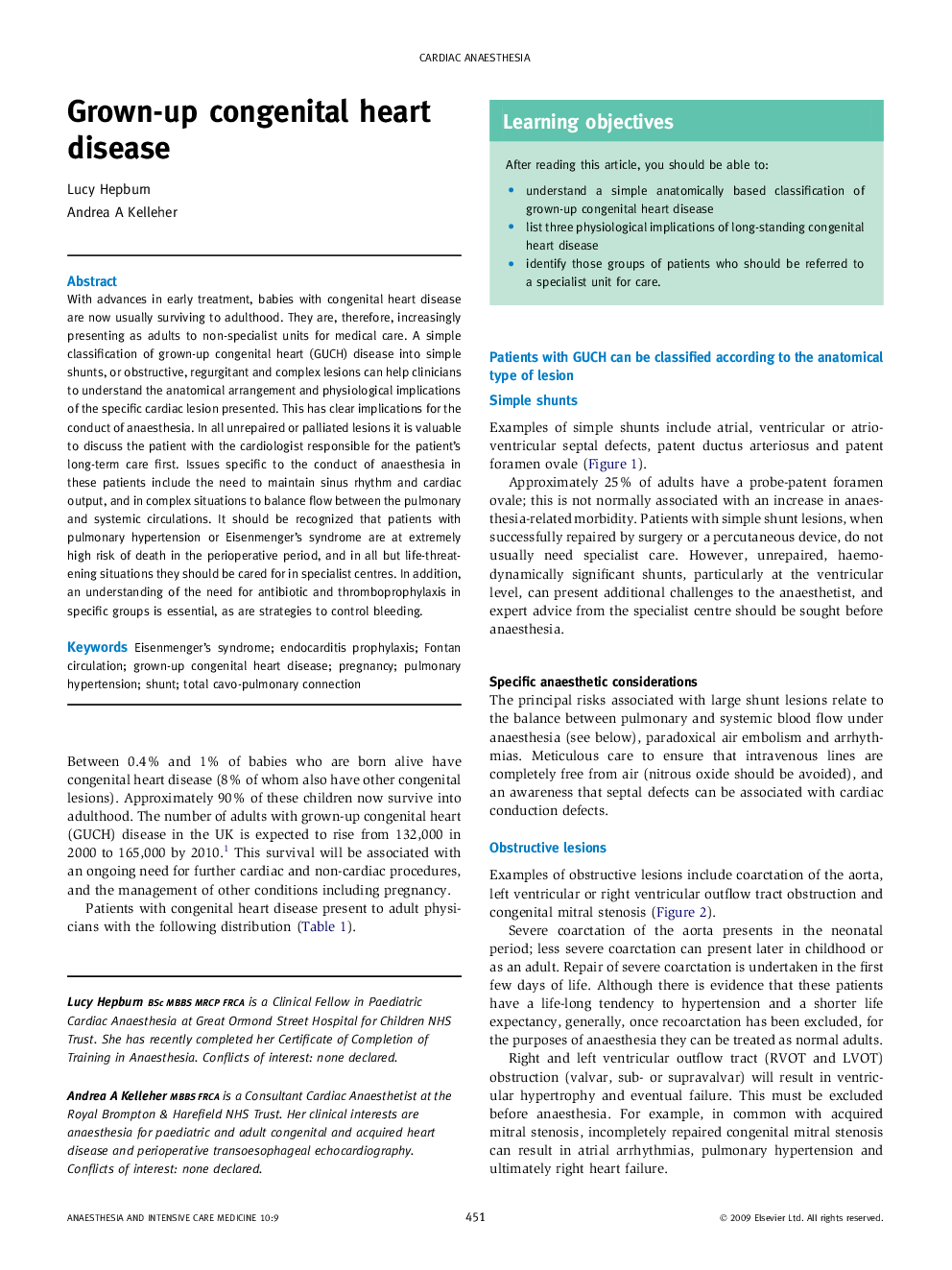| Article ID | Journal | Published Year | Pages | File Type |
|---|---|---|---|---|
| 2743482 | Anaesthesia & Intensive Care Medicine | 2009 | 6 Pages |
With advances in early treatment, babies with congenital heart disease are now usually surviving to adulthood. They are, therefore, increasingly presenting as adults to non-specialist units for medical care. A simple classification of grown-up congenital heart (GUCH) disease into simple shunts, or obstructive, regurgitant and complex lesions can help clinicians to understand the anatomical arrangement and physiological implications of the specific cardiac lesion presented. This has clear implications for the conduct of anaesthesia. In all unrepaired or palliated lesions it is valuable to discuss the patient with the cardiologist responsible for the patient's long-term care first. Issues specific to the conduct of anaesthesia in these patients include the need to maintain sinus rhythm and cardiac output, and in complex situations to balance flow between the pulmonary and systemic circulations. It should be recognized that patients with pulmonary hypertension or Eisenmenger's syndrome are at extremely high risk of death in the perioperative period, and in all but life-threatening situations they should be cared for in specialist centres. In addition, an understanding of the need for antibiotic and thromboprophylaxis in specific groups is essential, as are strategies to control bleeding.
